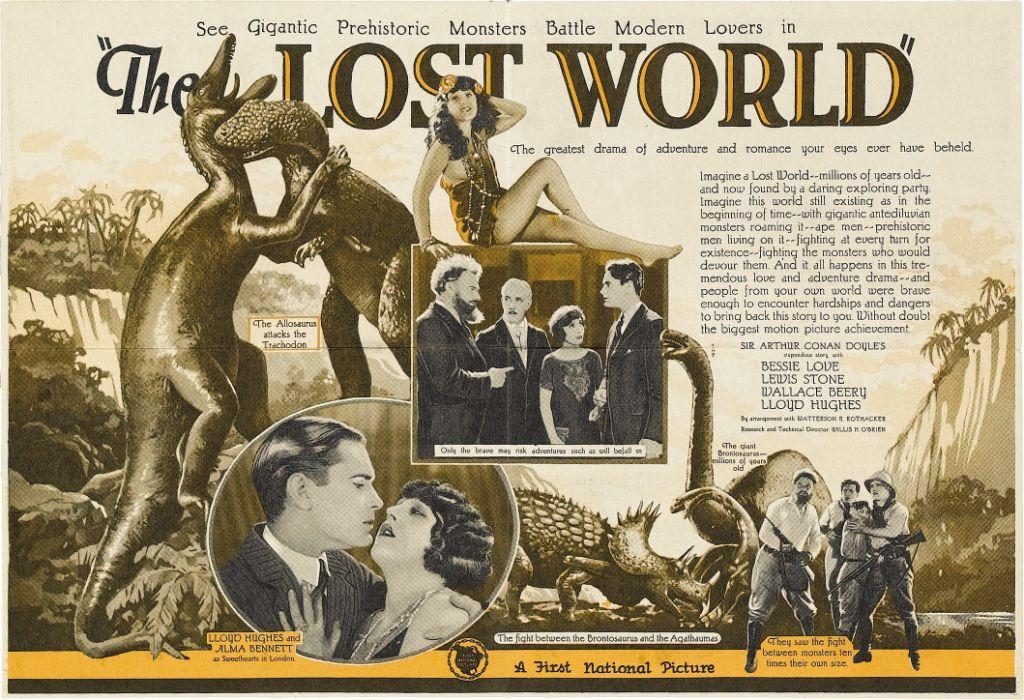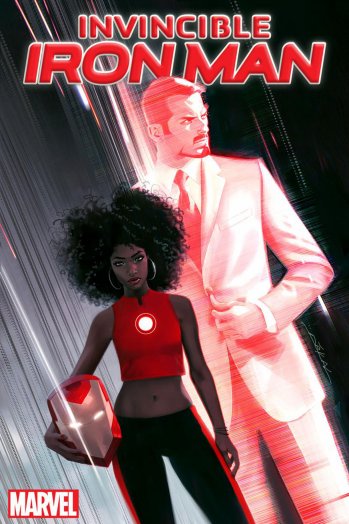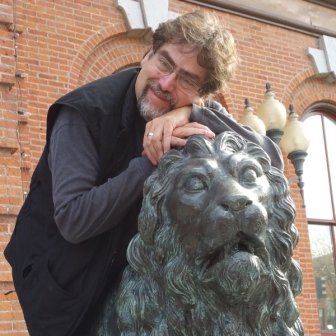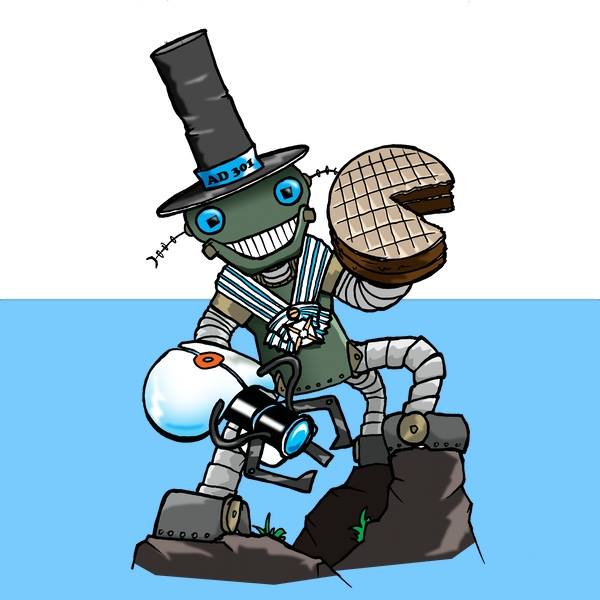(1) BLAME THOSE GUYS SOUTH OF CANADA. T. R. Napper’s “Americans Destroy Science Fiction” was passed along by JJ with the observation, “I find this piece ridiculously clueless about the history of Worldcon and the Hugo Awards, and about the actual reasons for the kerpupple and the American domination of the Awards. However, it certainly contains a different point of view, with some very valid points.”
…But let’s rewind a little. When I first started writing a few years back I heard there was this controversy in the genre. That diversity was being blocked, or rolled back, by a conservative praetorian guard of writers. My first thought was to man the barricades: to fight with those fighting for this thing they said was diversity, a concept I’ve always correlated with equity.
I worked in international aid for fifteen years. In that time, friends and colleagues of mine have been shot at, beaten, kidnapped, murdered, blown up, car-jacked, abused, and imprisoned. These horrific things were done to them because they tried to build a school for girls, or they ran a women’s empowerment program, or simply because they had the temerity to stand with the poor against a corrupt and violent social order.
So, you see, social justice, equity, are things I have a passing concern with.
The problem, I soon discovered, is that this debate is not about equity, and sure as hell isn’t about diversity. Rather, it is an inside-the-bubble conversation between two groups of American writers, each attempting to claim victim status. Worse, the boundaries of the discussion almost completely exclude non-Americans, and even within the US context there was little mention of disability, and none of class.
This particular tributary of the American culture wars is little more than tiny elite – the middle and upper-middle class of the most powerful country in the world – debating and defining diversity in the genre as a whole. It boils down to insiders arguing how to make awards more representative of 45% of the population (the middle and upper class) in a country accounting for 4% of the global population (the US).
(2) GAMING ADDICTION. On Real Life Magazine, Tony Tulahwitte, in an article called “Clash Rules Everything Around Me” talks about his love of Clash of Clans and tries to make the case for the positive things about spending all that time gaming.
Clan Prestige kicked me out immediately; Clan Friendship kicked me out for donating weak troops; Clan Love communicated mostly in Arabic. So I stayed awhile in the dead-silent Clan Maturity, left a week later for Clan Corgi Butts, and ended up where I always suspected I belonged: in the Trash Clan.
(3) KEEPS ON GOING. A total of nine NASA missions received extensions this week, including the two in the headline: “New Horizons Receives Mission Extension to Kuiper Belt, Dawn to Remain at Ceres”.
Following its historic first-ever flyby of Pluto, NASA’s New Horizons mission has received the green light to fly onward to an object deeper in the Kuiper Belt, known as 2014 MU69. The spacecraft’s planned rendezvous with the ancient object – considered one of the early building blocks of the solar system — is Jan. 1, 2019.
“The New Horizons mission to Pluto exceeded our expectations and even today the data from the spacecraft continue to surprise,” said NASA’s Director of Planetary Science Jim Green. “We’re excited to continue onward into the dark depths of the outer solar system to a science target that wasn’t even discovered when the spacecraft launched.”
Based upon the 2016 Planetary Mission Senior Review Panel report, NASA this week directed nine extended missions to plan for continued operations through fiscal years 2017 and 2018. Final decisions on mission extensions are contingent on the outcome of the annual budget process.
In addition to the extension of the New Horizons mission, NASA determined that the Dawn spacecraft should remain at the dwarf planet Ceres, rather than changing course to the main belt asteroid Adeona.
Green noted that NASA relies on the scientific assessment by the Senior Review Panel in making its decision on which extended mission option to approve. “The long-term monitoring of Ceres, particularly as it gets closer to perihelion – the part of its orbit with the shortest distance to the sun — has the potential to provide more significant science discoveries than a flyby of Adeona,” he said….
(4) EASTERCON 2012 CHOW. Lawrence Schoen posted “Eating Authors: Adrian Tchaikovsky” on Monday —
And there, in that weird moment of existential, Star Trek-related crisis, I was found by a band of SF academics from Oxford who I very tentatively knew, mostly through a common acquaintance with Paul Cornell (who is the Kevin Bacon of the UK SF scene). And like some kind of choir of angels they took me from the windowless confines of the convention hotel, first into the Outside, which I had almost forgotten existed, and then off to a Chinese restaurant with a bunch of other fans.
(5) SMOOTH SEGUE. Here’s where I drop in the Rob James Morgan tweet in response to Delilah S. Dawson’s fears about something literally eating authors.
the last one concerns everyone; worldcon bear attacks are forecast to be up 200% in 2016*
*not an actual statistic
— Rob M. (@RobJamesMorgan) July 6, 2016
(6 FEELS GUIDE TO FANAC. Suvudu’s Matt Staggs recommends a book and podcast discussion: “Therapist Kathleen Smith Talks About ‘The Fangirl Life’ on ‘Beaks & Geeks’”.
In her book The Fangirl Life: A Guide to Feeling All the Feels and Learning How to Deal, Kathleen Smith, a licensed therapist, introduces readers to her own brand of fan-friendly self-help: a unique niche in therapeutic thought where Doctor Who is more important than Doctor Freud, and the feels is very real. This is her first book aimed at fangirls, but Smith has been offering sage advice to female fandom for handling anxiety, relationship troubles, and more for a long time at her site www.fangirltherapy.com.
If you enjoy flailing over badass fictional ladies or speculating endlessly over plot points, but would like to carve more space for the narrative of your own life, this is the book for you. Written by a proud fangirl who is also a licensed therapist, The Fangirl Life is a witty guide to putting your passions to use in your offline life, whether it’s learning how writing fan fiction can be a launching point for greater career endeavors, or how to avoid the myths that fictional romance perpetuates.
(7) T5S. Aaron Pound reviewed Fifth Season by N.K. Jemisin for Dreaming of Other Worlds. (Haiku warning!)
Full review: There is a vague and indistinct region in between the genres of fantasy and science fiction. While some books rest comfortably on one side of this division or the other, others are happy to rest in that ambiguous zone between them, maybe from some angles a work of fantasy, and from others a work of science fiction. The Fifth Season is one of those books, with elements that make one think that the story is a pure fantasy, and others that are squarely within the realm of science fiction. Against this backdrop, Jemisin weaves a brutal story of enslavement, oppression, and anger that is at once intensely personal and breathtaking in its scope.
(8) QUOTE OF THE DAY:
Kyra: I consider SFWA to be a one-syllable word, pronounced as spelled.
(9) EATING THE FANTASTIC. Scott Edelman joined Gene O’Neill for lunch in Las Vegas on Episode 12 of the Eating the Fantastic podcast.
For the fifth and final episode of Eating the Fantastic recorded in Las Vegas during StokerCon, I headed out to Hash House A Go Go, one of my favorite restaurants—at least in its San Diego incarnation. My breakfast there is always one of my favorite Comic-Con meals. But alas, there turned out to be more than a 90-minute wait that Sunday morning in Vegas, so I moved on to Yard House at the recommendation of my guest, Gene O’Neill, who’d eaten there earlier that weekend.
Gene, with whom I attended the Clarion Science Fiction & Fantasy Writers’ Workshop when dinosaurs still roamed the Earth, has been nominated 11 times for the Bram Stoker Award, and has won twice, in the categories of Long Fiction and Fiction Collection.
(10) INDIANAPOLIS FANDOM. Tony Schaab wrote a report on InConJunction for ScienceFiction.com.
Dubbed “The Crossroads of the Multiverse,” the small but mighty InConJunction celebrated it’s amazing 36th show this year on July 1-3, 2016, at the Marriott East in Indianapolis, IN. A fan-run convention since the beginning some 30-plus years ago, the show is organized by The Circle of Janus Science Fiction & Fantasy Club. With a heavy focus on sci-fi and fantasy, the show boasts several unique and entertaining aspects, including a fully-functional Bridge Simulator, an expansive Live Auction, a cosplay Masquerade, and specific rooms dedicated to ‘Doctor Who,’ anime, and more.
(11) SEVENTH HELL OF WHO. Not everyone thinks it was bad, however, “’Doctor Who’ Showrunner Steven Moffat Admits Series Seven Was ‘Miserable’”, at ScienceFiction.com.
If you don’t recall, Season Seven of NuWho involved a “monster movie of the week” feel with a series of standalone episodes that built up to the departure of Amy and Rory in the midseason episode ‘The Angels Take Manhattan’, the Doctor’s first adventures with Clara Oswald, and the introduction of John Hurt as the War Doctor. But with important moments like these, how could the season have been so generally bad? Well, it sounds like the pressure of Matt Smith leaving the show and the 50th anniversary got to Moffat a little bit:
“Matt [Smith], who was a friend and ally, was leaving – I couldn’t get him to stay. It felt like everything was blowing up around me. I was staggering into the 50th, with no Doctors contracted to appear in it, battered with endless hate mail about how I hadn’t got William Hartnell back and ‘Sherlock’ series three at the same time. I was pretty miserable by the end of it, and I couldn’t bear to let that be the end.”
(12) THE LOST WORLD. “See Gigantic Prehistoric Monsters Battle Modern Lovers” when the Alex Film Society screens The Lost World (1925) on Sunday, July 10 at 2:00 p.m.
“Imagine a Lost World—millions of years old—and now found by a daring exploring party. Imagine this world still existing as in the beginning of time—with gigantic antediluvian monsters roaming it—ape men—prehistoric men living on it—fighting at every turn for existence—fighting the monsters who would devour them. And it all happens in this tremendous love and adventure drama—and people from your own world were brave enough to encounter hardships and dangers to bring back this story to you. Without doubt the biggest motion picture achievement.”
Featuring some of the biggest stars of the silent era, including Wallace Beery, Bessie Love and Lewis Stone, as well as no less than a dozen different species of dinosaur, our print of The Lost World is a fully restored version from the George Eastman House collection. Famed composer and pianist Alexander Rannie will accompany the film with the musical score that was written for the original release.
(13) CHANGING ICON. In The Hollywood Reporter, Graeme McMillan has the story: “Tony Stark Replaced by Black Woman as Marvel’s Comic Book Iron Man”. The theory is that a brilliant MIT student who built her version of Iron Man armor will replace Tony Stark from Invincible Iron Man #7 onwards.
Williams debuted in Invincible Iron Man No. 7 in March of this year, and will headline a relaunched version of the title later this year as part of the Marvel NOW! relaunch. Created by series writer Brian Michael Bendis — who also co-created Miles Morales, the half-black, half-Latino Spider-Man who debuted in 2011 — and artist Mike Deodato, Riri has been shown to be even more resourceful than Stark himself, and just as stubborn.
Williams’ ascension as Iron Man (The title of the series will remain the same, according to Marvel) continues a trend for replacing, or at least adding to, the traditional white male heroes with a more diverse cast over the last few years; in addition to the Miles Morales Spider-Man, Sam Wilson became Marvel’s second black Captain America in 2014, the same year that Jane Foster took over as Thor.
(14) WILL THERE BE A MELTDOWN? Breitbart.com is canvassing the internet hoping to find negative reactions to the Iron Man story. This is a tweet they included in their news item.
https://twitter.com/ira/status/750690368413249536
(15) CAP CLAIMED BY BATTLING BOROUGHS. BBC reports a Marvel will place a statue of Captain America in a Brooklyn park. Naturally, this is causing controversy. For a change, it has nothing to do with Hydra.
The company has commissioned a 13-ft (3.96m) bronze statue which will be housed in Prospect Park in Brooklyn.
It will be unveiled at the San Diego Comic Con later this month before being placed in the park from 10 August.
A sketch of the statue released by Marvel shows the character holding his signature shield in the air…..
The figure will also bear the superhero’s quote “I’m just a kid from Brooklyn” – said in the 2011 film Captain America: The First Avenger.
However, some fans have pointed out the original comic book character was actually from Manhattan’s Lower East Side.
In the comics, the superhero was the son of Irish immigrants – a similar background to that of co-creator Jack Kirby, who was the son of Austrian-Jewish immigrants living in the same area.
(16) COMIC STRIP. The eponymous character of The Wizard of Id is attending Wizardcon this week. Today he has a tough decision to make.
(17) NEXT ROGUE ONE TRAILER COMING. UPI says the second Rogue One trailer will premiere in the US on ABC.
According to fansite Making Star Wars, television listings for ABC reveal that they plan on airing a new Star Wars special on July 15 that will also include a new three minute trailer for Rogue One.
The title of the special, Secrets of The Force Awakens, shares the same name as a making of documentary that was included in the blu-ray release of Star Wars: The Force Awakens.
(18) JUNO. NASA posted images received from Juno as a time-lapse video of moons orbiting Jupiter.
NASA’s Juno spacecraft captured a unique time-lapse movie of the Galilean satellites in motion about Jupiter. The movie begins on June 12th with Juno 10 million miles from Jupiter, and ends on June 29th, 3 million miles distant. The innermost moon is volcanic Io; next in line is the ice-crusted ocean world Europa, followed by massive Ganymede, and finally, heavily cratered Callisto. Galileo observed these moons to change position with respect to Jupiter over the course of a few nights. From this observation he realized that the moons were orbiting mighty Jupiter, a truth that forever changed humanity’s understanding of our place in the cosmos. Earth was not the center of the Universe. For the first time in history, we look upon these moons as they orbit Jupiter and share in Galileo’s revelation. This is the motion of nature’s harmony.
[Thanks to John King Tarpinian, JJ, and Martin Morse Wooster for some of these stories. Title credit goes to File 770 contributing editor of the day mc simon milligan.]










